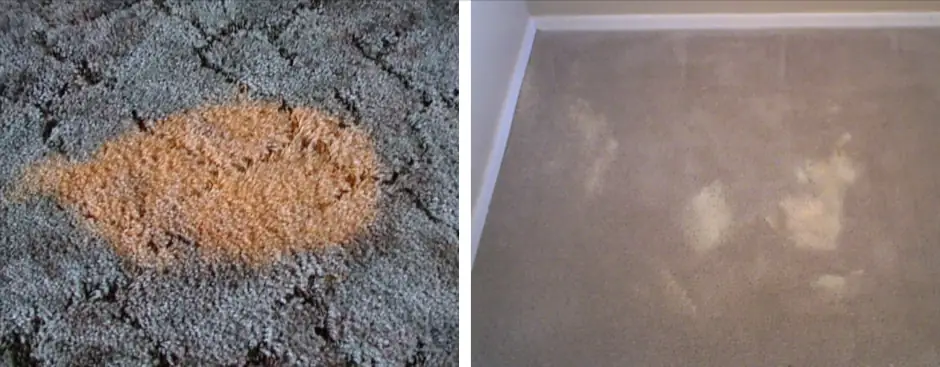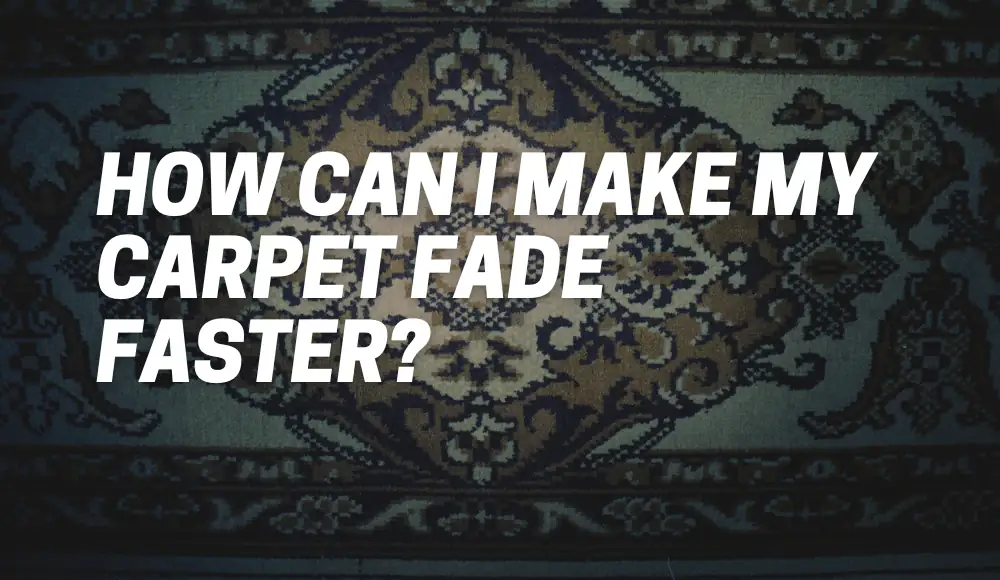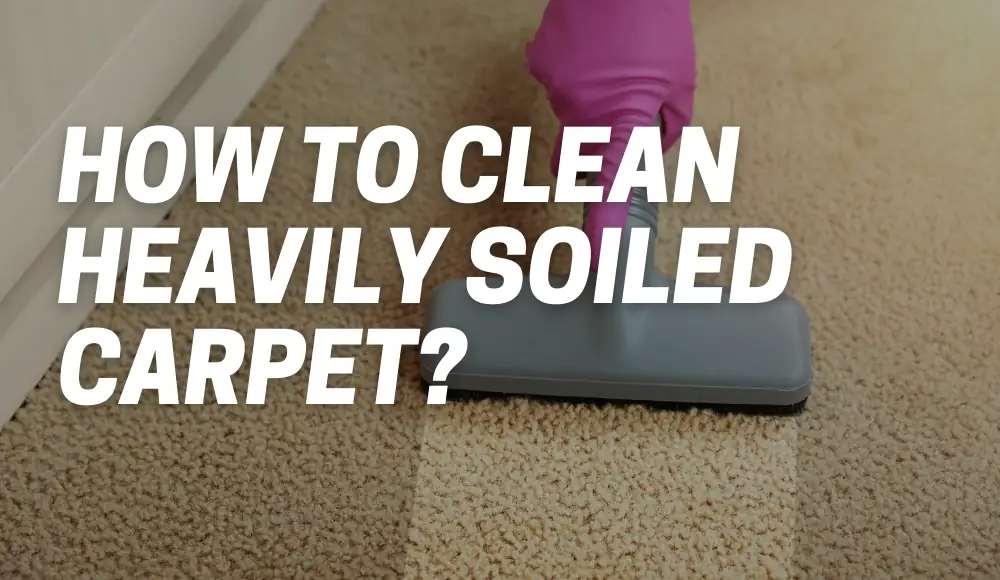When it comes to home decor, carpets play a significant role in setting the tone for your living space. However, there might be instances where you find yourself wanting to change the color of your carpet or simply achieve a faded look for that trendy vintage vibe.
In this article, we’re diving deep into the world of carpet fading, exploring whether it’s possible, how long it takes, and some unique methods you can try. So, if you’ve ever wondered about ways to fade a carpet, you’re in for a treat!
Will Carpet Lighten Over Time?
Carpets are like silent witnesses to the stories of our homes, enduring foot traffic, spills, and the passage of time. But will they naturally lighten over time?
The answer is yes, to some extent. Much like the way our skin tans under the sun, carpets exposed to sunlight can undergo a subtle fading process. The colors may become slightly softer and less vibrant, giving your carpet a gently aged appearance.
Imagine a sunlit room with a large window, inviting warm rays to dance upon your carpet’s surface. Over the years, these sunbeams gently caress the fibers, softly coaxing the hues to mellow and transform.
It’s akin to the art of aging a fine wine, where time bestows a refined elegance upon your beloved carpet.

How Long Does It Take for Carpet to Fade?
The fading process of a carpet is akin to watching a masterpiece unfold. However, patience is key here. The time it takes for a carpet to fade depends on various factors, such as the type of carpet, the intensity of sunlight it receives, and the original dye used.
On average, you might start noticing a gradual change in color after a year or two of consistent sunlight exposure.
Picture this: a vibrant carpet in a sunlit room that basks in the glory of daylight. With each passing season, the sun’s gentle touch orchestrates a symphony of subtle color shifts. Like a painter’s brush on a canvas, time delicately blends and softens the once-bold tones. It’s a testament to nature’s artistry and your carpet’s enduring beauty.
Can You Dye Carpet Lighter?
If you’re feeling a bit more impatient and want to fast-track the fading process, you might wonder if you can dye your carpet to make it lighter.
While it’s theoretically possible, it’s a delicate process that requires precision and expertise. Attempting to dye your carpet at home might result in uneven colors or even damage. If you’re set on changing your carpet’s color, it’s best to consult with professionals who have experience in carpet dyeing.
Consider this scenario: you’ve decided it’s time for a change, a fresh chapter for your living space. Armed with dye and determination, you set out to transform your carpet. However, dyeing a carpet is no mere DIY project; it’s an art form that demands an understanding of fibers, dyes, and techniques.
Entrust your carpet’s fate to the hands of experts, and you’ll unveil a masterpiece that seamlessly harmonizes with your vision.
How Do You Fade Carpet Color?
Now, let’s get into the nitty-gritty of how to fade carpet color effectively.
One method involves a mixture of vinegar and water.
- Create a solution using equal parts of white vinegar and water, and lightly mist your carpet with it.
- Then, place the carpet in direct sunlight.
Vinegar is known for its ability to break down colors, and when combined with sunlight, it can help accelerate the fading process. Remember, though, that moderation is key to avoid over-fading or damaging your carpet.
Does Vinegar Fade Carpet?
Vinegar can be a method in your quest to fade your carpet.
As mentioned earlier, the acidic properties of vinegar make it in breaking down dyes. When used in moderation and combined with sunlight exposure, vinegar can indeed contribute to fading your carpet’s color. Just remember, a little goes a long way.
Envision a world where humble pantry ingredients hold the power to metamorphose your living space. Vinegar, a trusted companion in culinary adventures, assumes a new role as a catalyst of change. Its acetic magic dances upon your carpet, dissolving the vibrant pigments and inviting a muted elegance to emerge.
Does Carpet Fade in Sunlight?
Sunlight can be both a friend and a foe to your carpet.
While it can add a gentle touch of fading over time, excessive and prolonged sunlight exposure can lead to more significant color changes and even weaken the fibers. To strike the right balance, consider rotating your carpet periodically or using window treatments to regulate the amount of sunlight it receives.
Does Baking Soda Lighten Carpet?
Baking soda is a versatile household item, known for its cleaning and deodorizing properties.
But can it also lighten your carpet?
The answer is a bit more nuanced. Baking soda can help absorb odors that might contribute to discoloration, indirectly maintaining your carpet’s original color. However, it won’t have a significant direct impact on fading the color.
Will Paint Thinner Fade Carpet?
Paint thinner might be your go-to solution for various DIY projects, but using it to fade your carpet’s color is a risky endeavor.
Paint thinner is potent and can easily damage or strip the fibers of your carpet, leading to irreparable harm. It’s best to avoid this method altogether to ensure the longevity of your carpet.
How Can I Make My Rug Fade Faster?
If you’re determined to speed up the fading process of your carpet, you might consider combining a few methods.
For instance, you can lightly mist your carpet with a vinegar-water solution and then place it in a sunny spot. Remember, moderation is key, and closely monitor the progress to achieve the desired faded effect without causing harm.
Imagine yourself as an alchemist of time, carefully concocting the perfect elixir for your carpet’s transformation. A dash of vinegar, a touch of sunlight, and a sprinkle of patience blend together to create a symphony of fading hues.
Can You Bleach Carpet to Lighten It?
Bleaching might be a familiar technique for lightening fabrics, but using it on your carpet is a different story.
Bleach is a potent chemical that can easily damage the fibers and alter the texture of your carpet. Moreover, it might result in uneven fading or discoloration, making your carpet appear worn out rather than faded gracefully.
Consider the delicate balance between restoration and transformation. Bleach, a powerful agent of change, can be both a savior and a destroyer. As you weigh the scales, envision the potential consequences – a carpet marred by blotches and weakened threads.
Instead of pursuing a path that might lead to unintended ruin, embrace the journey of fading as a gradual evolution that honors your carpet’s heritage.

Does Peroxide Lighten Carpet?
Hydrogen peroxide is another household item that has found its way into various cleaning and lightening methods.
While it might have some effect on lightening certain fabrics, using hydrogen peroxide on your carpet can be risky. Similar to bleach, it can damage the fibers and potentially lead to uneven fading or color changes.
Hydrogen peroxide, a fleeting artist, holds the promise of change. Yet, within the realm of your carpet, it can be a capricious force, altering the fabric’s very essence. To safeguard your carpet’s beauty, honor its journey through the gentle embrace of methods designed to fade with care.
How to Clean a Faded Carpet
Maintaining the beauty of a faded carpet requires a bit different approach than caring for a vibrant one.
Regular vacuuming and gentle spot-cleaning are essential to prevent dirt and stains from settling into the fibers. Additionally, consider using carpet-friendly cleaners that are specifically designed for faded or vintage carpets. These products can help refresh the colors and maintain the integrity of your carpet’s appearance.
A Quick Guide to Fading Carpets: Do’s and Don’ts
To wrap up our exploration of fading carpets, here’s a handy list of do’s and don’ts:
Do:
- Embrace patience; allow natural sunlight to gradually fade your carpet.
- Consider using a vinegar-water solution in moderation to accelerate fading.
- Rotate your carpet periodically to ensure even exposure to sunlight.
- Use specialized carpet cleaners designed for faded carpets.
Don’t:
- Attempt DIY dyeing or bleaching; consult professionals for major color changes.
- Overuse vinegar or any other fading method; moderation is key.
- Expose your carpet to excessive sunlight, which can weaken fibers and cause more harm than good.
- Use potent chemicals like paint thinner or hydrogen peroxide, as they can damage your carpet.
Remember, the goal is to achieve a gracefully faded carpet that adds character and charm to your living space. With the right approach and a little bit of time, you can create a stunning and unique atmosphere that reflects your personal style.
Conclusion
In conclusion, the art of fading a carpet is a delicate balance between time, patience, and gentle methods. While it might not be an overnight transformation, the gradual change in your carpet’s color can be a rewarding journey.
By understanding the science behind fading and employing safe techniques, you can successfully achieve that coveted vintage look without compromising the quality of your carpet.
So go ahead, embark on your carpet-fading adventure and watch as your living space transforms into a captivating canvas of history and style. Whether you choose to embrace the gentle touch of sunlight or experiment with careful solutions, your faded carpet will stand as a testament to the artistry of time itself.

